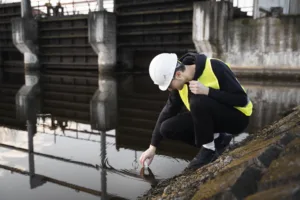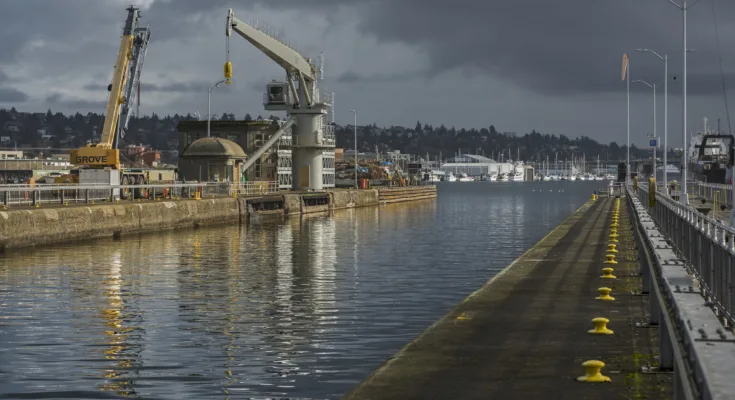Underwater construction is an intriguing profession where industrial activities are performed under the water. This niche industry needs particular master skills, materials, and approaches to be able carry out different projects. Underwater construction is a staple of modern infrastructure development from building bridges to establishing offshore wind farms.
Applications of Underwater Construction
Civil Engineering
n civil engineering underwater construction is used to construct structures beneath the water table. Sub-terrestrial foundational structures are also needed whenever bridges and causeways have to be constructed, which they control by the use of cofferdams or pressurized caissons. These under water foundations serve fundamental purpose necessary in supporting infrastructure straddling bodies of waters.
Coastal Engineering
Coastal engineering projects consist of a variety of structures located in or adjacent to the coastal water. Such may include harbors, docks, breakwaters, jetties piers and wharfs. These structures have multiple functions, ranging from the provision for sea routes to promoting coastal land stability and protection against erosion by storm surges.
Energy Infrastructure
Under water construction has played a vital role in the energy sector. Construction in waterways is required for wind farms, tidal power plants, wave generation stations and hydroelectric projects besides the systems used to cooling of most European power stations. These types of structures harvest the power from the ocean and help in generating renewable energy and promoting sustainability efforts.
Offshore Petroleum Extraction
Underwater construction is an essential process for the petroleum field because this kind of operation will help produce oil and gas out on offshore natural reservations. This encompasses the marine wellhead completions, offshore mooring systems and submarine pipelines. These infrastructures facilitate the extraction, transportation and conversion of petroleum resources offshore.

Challenges Faced in Underwater Construction
Internal marine activities, such as underwater construction are associated with some peculiar challenges that must be tackled competently. Materials that are easy to find and can withstand underwater conditions such as salt water environments present a formidable challenge. Further, the management of water pressure becomes essential because deeper depths can produce considerable forces on structures and people. Corrosion of underwater infrastructure is another constant threat and may require novel approaches to prevention and maintenance.
Materials Used in Underwater Construction
Many materials used for the construction work in submergible are very tough to resist corrosion. The concrete has various uses and one of the most common is that it can be used under water to form strong structures like bases as well barriers. Certainly, another type of material that is quite popular in terms of its use for the vessel structure and equipment is steel. It inspires with sufficient strength combined with openness to be used effectively within seas or oceans; even more so it confirms strengths not depending on climatic parameters as well as resistance against different sea essence such as chloride and temperature cracks The acrylic glass, with its transparency and strength features is used in the underwater viewing domes orange tube kalau apa esok membuat anakku insolven. We were even guilty of sometimes expecting too much from them.
Impressive Feats and Future Development
Although it presents obvious obstacles in its nature, underwater construction has produced historical phenomenons. Engineers have shown their creativity and determination when constructing iconic bridges or even huge offshore platforms to further prove that they can build in the oceans. Further, it is easy to observe that the future development of underwater construction will surely be better than this one. New developments in modern technologies are set to unveil several possibilities under the surface of our oceans.
Conclusion
Underwater construction is a crucial element in many industries, from infrastructure to energy and raw materials. However, despite all the difficulties and obstacles that they had to face in order work under water engineers keep on researching ideas for creating new inventions. The continuous advancements combined with the determination to pursue sustainability ensures that underwater constructions have a bright future ahead, thus, creating possibilities for more discoveries and innovation beneath water bodies.

FAQs
Q: What are some well-known underwater construction projects?
A: These include the Palm Jumeirah in Dubai, the Channel Tunnel that joins England and France as well as Burj Al Arab underwater hotel.
Q: How do engineers tackle corrosion in an underwater structure?
A: There are different corrosion-resistant materials, coatings and cathodic protection systems that engineers use in order to remediate the effects of underwater infrastructure on them.
Q: What are some special problems found among commercial divers?
A: Commercial divers have to live with poor visibility, cold temperature conditions amongst others and risky life forms such as marine creatures move around underwater together.
Q: How does underwater construction work?
A: The presence of underwater construction allows for the installation and maintenance of renewable energy structures such as offshore wind turbines, tidal generators as well as hydroelectric power plants which help to reduce dependence on oil.
Q: What are the environmental concerns that arise from underwater construction?
A: Environmental conditions can be characterized by habitat disturbance, sedimentation and noise pollution as well as possible effect on marine ecosystems. But with proper planning and control measures, these effects can be reduced drastically.




